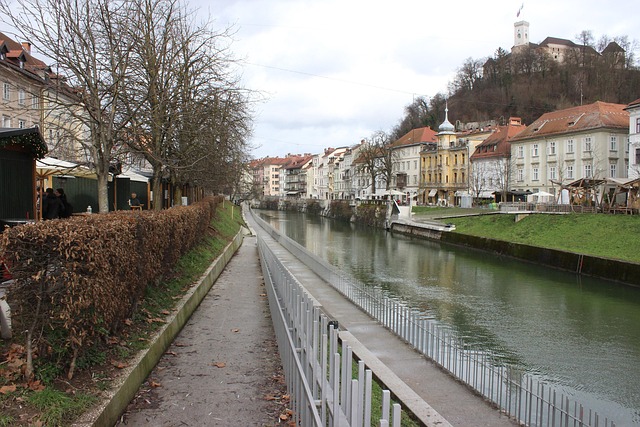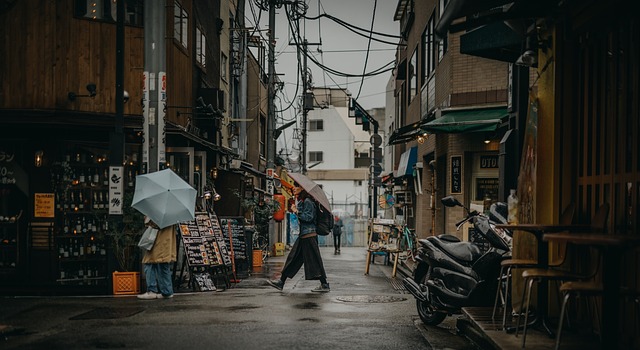Karachi's urban challenge of load shedding, or temporary power cuts, disproportionately affects densely populated areas like Abul Hassan Isphani Road, disrupting residents' lives and businesses. Driven by infrastructure aging, energy demand growth, uneven distribution, illegal connections, and lack of maintenance, these power outages threaten the city's sustainability. However, through community adoption of renewable energy, smart grid technologies, and conservation practices, Karachi is working towards a more reliable and environmentally friendly electricity supply for its diverse population.
“Karachi, Pakistan’s bustling metropolis, has long grappled with the issue of electricity load shedding, particularly in specific urban areas like near Abul Hassan Isphani Road. This article delves into the complex landscape of power outages in Karachi, examining their impact on residents and businesses. We explore historical incidents, identify causes, and highlight potential solutions, offering a comprehensive view of this pressing challenge. By understanding the factors contributing to load shedding, we can work towards sustainable electricity supply for all Karachians.”
- Understanding Load Shedding in Karachi's Urban Landscape
- The Impact on Residents and Businesses Near Abul Hassan Isphani Road
- Historical Perspective: Past Incidents and Lessons Learned
- Causes and Factors Contributing to Regular Power Outages
- Potential Solutions and Community Efforts for Sustainable Electricity Supply
Understanding Load Shedding in Karachi's Urban Landscape

Load shedding, a common phenomenon in Karachi’s urban landscape, refers to the temporary disruption of electricity supply to manage the high demand. This issue is particularly prevalent near areas like Abul Hassan Isphani Road, where population density and commercial activity are high. In the fast-paced city of Karachi, understanding load shedding is crucial for residents and businesses alike to plan and adapt to these periodic power cuts.
Karachi’s electricity distribution network faces immense strain during peak hours, leading to regular load shedding to prevent system overload. This practice allows utility providers to balance supply with demand, preventing more severe blackouts or long-term infrastructure damage. While it may cause inconvenience in the short term, efficient load management ensures a more reliable power supply over time, fostering a sustainable and resilient urban environment for Karachi’s diverse population.
The Impact on Residents and Businesses Near Abul Hassan Isphani Road

The frequent electricity load shedding near Abul Hassan Isphani Road in Karachi has had a notable impact on both residents and local businesses. Many homeowners have expressed frustration over the inconsistent power supply, leading to disruptions in their daily routines. From disrupted sleep patterns due to regular power cuts to difficulties in cooking and heating during cold nights, the lack of steady electricity has taken a toll on the well-being of those living in the area. Students, too, are affected as they struggle to complete their homework or prepare for exams during these intermittent power outages.
For businesses, the situation is equally challenging. Restaurants and cafes near Abul Hassan Isphani Road often have to shut down or operate with reduced services during load shedding. This not only impacts their revenue but also affects customer satisfaction. Retail stores and other commercial establishments face similar issues, leading to a decline in productivity and potential loss of clients who seek more reliable power supply elsewhere. The inconsistent electricity supply has thus created an urgent need for sustainable solutions to ensure a continuous power flow, enhancing the quality of life for residents and supporting the thriving business community along this bustling Karachi road.
Historical Perspective: Past Incidents and Lessons Learned

In Karachi, the issue of electricity load shedding has been a recurring challenge for decades. Historically, the city has experienced frequent power outages, especially during peak hours and summer seasons, when demand surges. Past incidents have left valuable lessons for authorities and residents alike. For instance, the severe heatwaves in 2019 highlighted the vulnerability of the city’s aging electricity infrastructure, leading to widespread load shedding that affected businesses, hospitals, and daily routines. These events underscored the need for a robust power distribution network and efficient management strategies.
Through these historical perspectives, Karachi has witnessed firsthand the impact of inadequate power supply on its vibrant urban landscape. Lessons learned have prompted initiatives to enhance electricity generation capacity, improve grid stability, and implement smart metering systems. The city’s resilience in navigating past challenges offers hope for a more reliable power supply, but continued efforts are necessary to ensure that residents and businesses can thrive without frequent interruptions from load shedding.
Causes and Factors Contributing to Regular Power Outages

In Karachi, regular power outages, particularly near Abul Hassan Isphani Road, are a significant concern for residents and businesses alike. Several factors contribute to this recurring issue. One primary cause is the mismatch between the city’s growing energy demand and the existing infrastructure capacity. As Karachi’s population expands, the strain on the electrical grid increases, leading to frequent load-shedding episodes. Additionally, aging power transmission lines and distribution networks are prone to faults and damages, further exacerbating the problem.
Another factor is the uneven distribution of electricity resources. Certain areas in Karachi, including some parts near Abul Hassan Isphani Road, may receive less attention regarding infrastructure maintenance and upgrades compared to others. This disparity can result in more frequent power cuts as older systems struggle to meet the demands of modern, energy-intensive lifestyles. Moreover, illegal connections and theft of electrical energy also play a role, causing instability in the power supply.
Potential Solutions and Community Efforts for Sustainable Electricity Supply

In Karachi, the frequent electricity load shedding near Abul Hassan Isphani Road has prompted both individuals and communities to explore potential solutions for a more sustainable electricity supply. One key approach involves adopting renewable energy sources like solar power, which can mitigate the strain on the grid during peak hours. Many residents have taken it upon themselves to install solar panels on rooftops, contributing to a distributed energy network that reduces reliance on traditional fossil fuels.
Community efforts have also played a significant role in addressing this issue. Local initiatives focus on promoting energy conservation practices and raising awareness about efficient electricity usage. These include organizing workshops, sharing best practices, and implementing smart grid technologies. By fostering collaboration and empowering residents to take control of their energy consumption, these collective actions aim to ensure a more reliable and environmentally friendly electricity supply for the future, not just in specific areas like Abul Hassan Isphani Road but across Karachi.
In conclusion, the recurring electricity load shedding near Abul Hassan Isphani Road in Karachi highlights the need for sustainable solutions. By understanding historical incidents, acknowledging the impact on residents and businesses, and considering underlying causes, it’s evident that collective action is required. Community efforts and potential solutions can mitigate power outages, ensuring a more reliable and stable electricity supply for the future of Karachi.

Leave a Reply